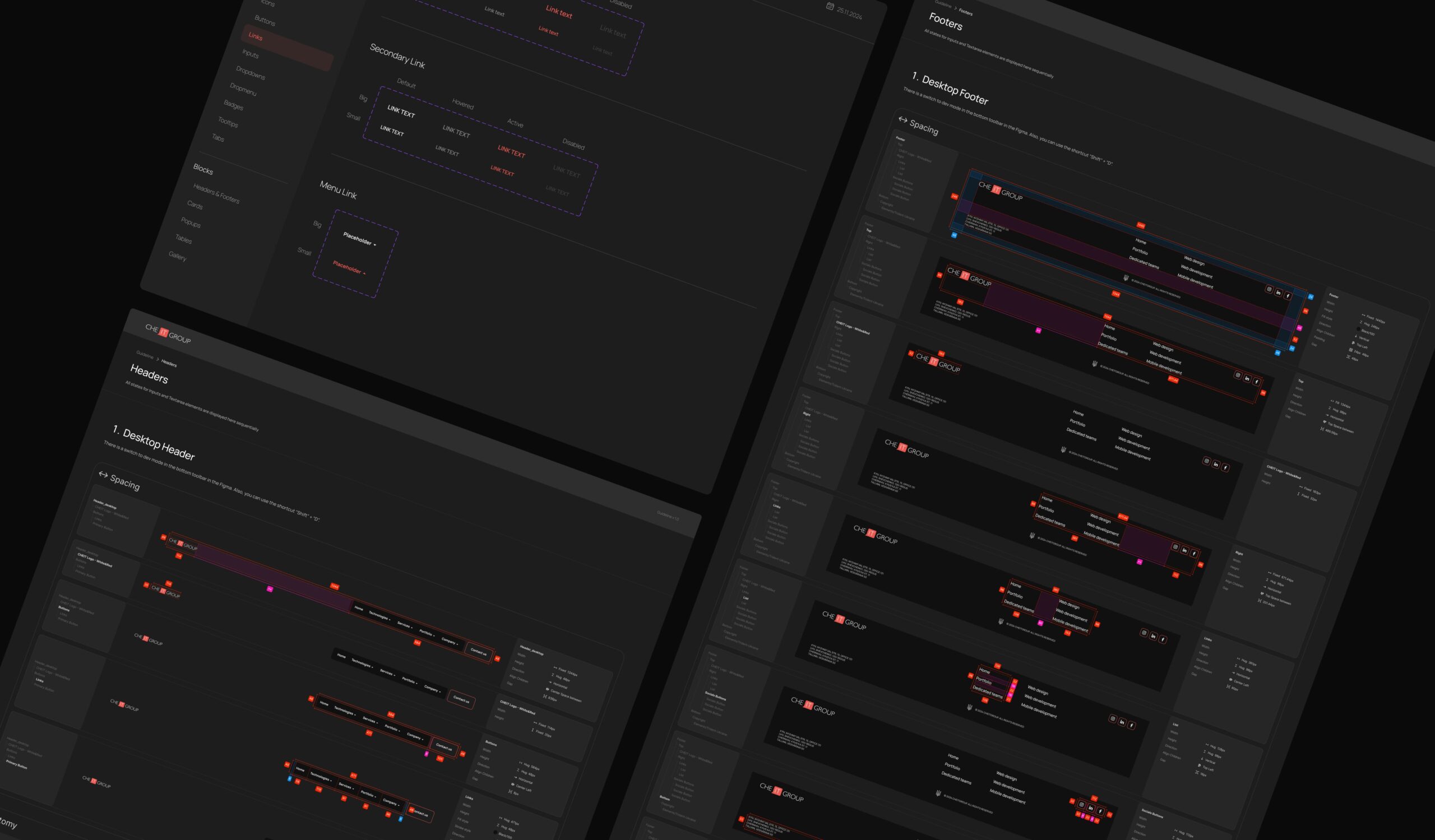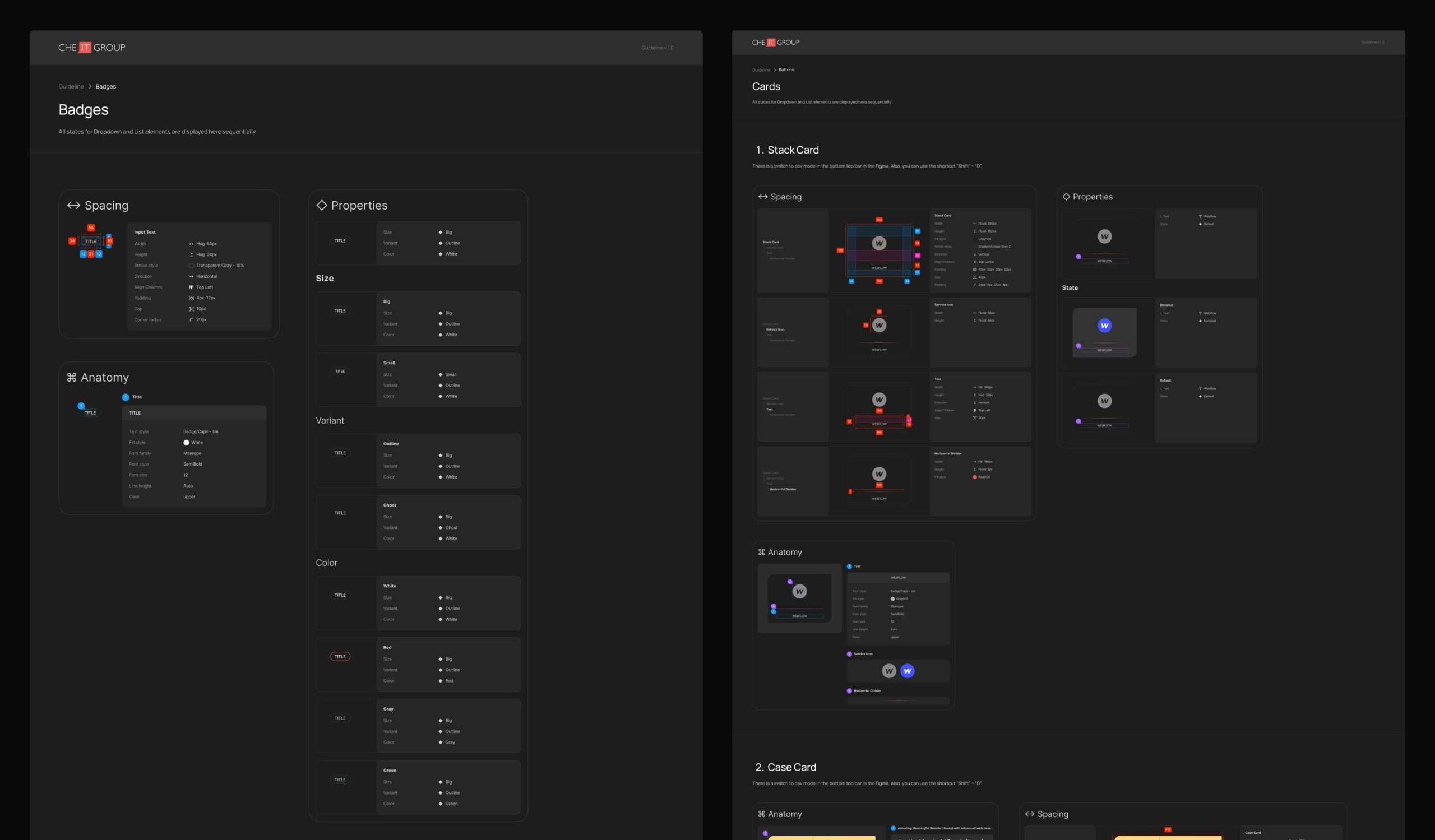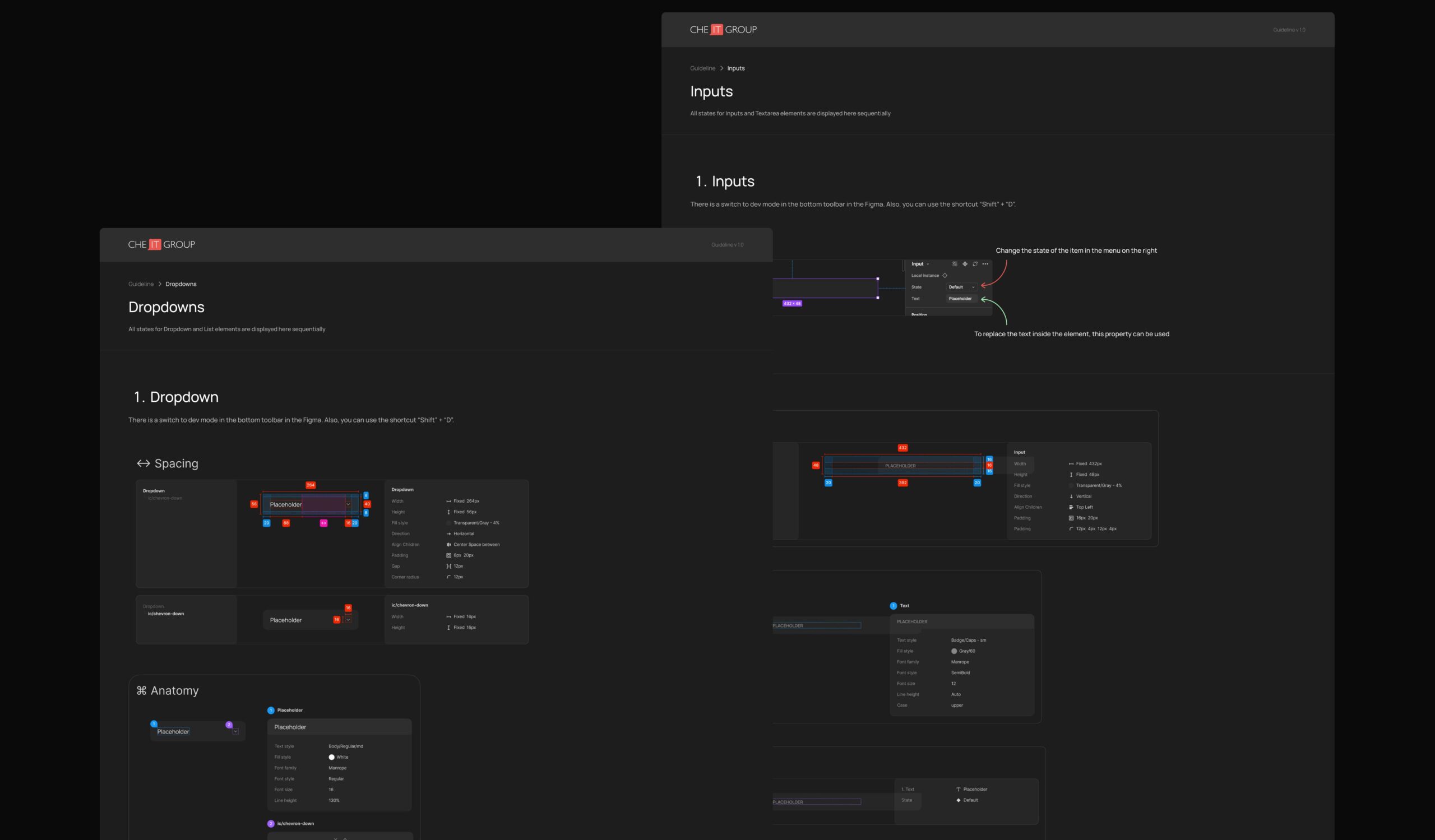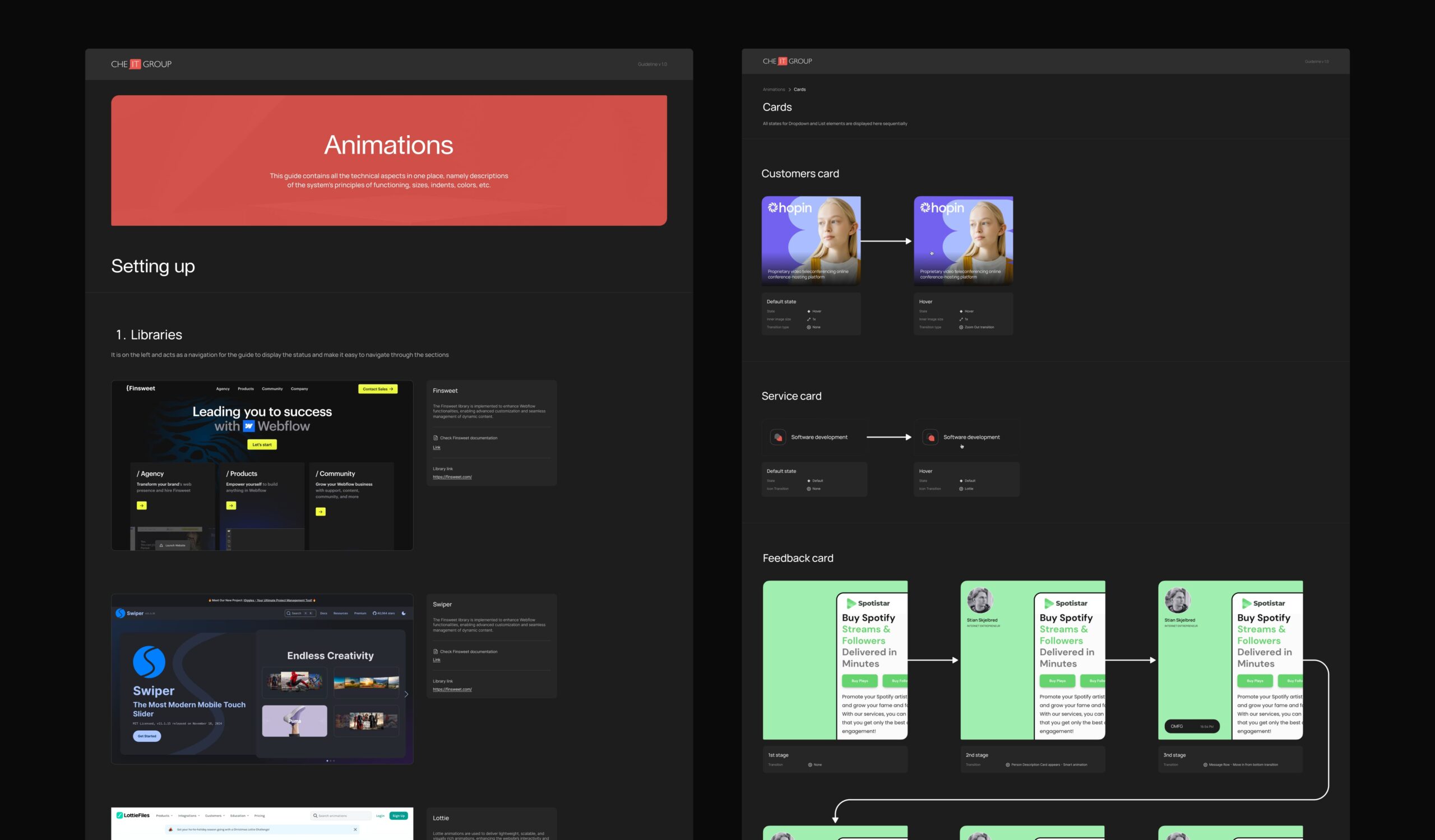
What a design system is and why it’s not just “about design”
Revend Group is a Ukrainian web design agency that helps businesses scale by creating structured design solutions. We develop interfaces for websites, mobile applications, SaaS products, CRM and ERP systems. One of our key tasks is to optimize the work of product teams through a systematic approach to design and development.
A regular client Che IT Group, a progressive Ukrainian IT company, approached us with the task of implementing a design system for their official website. They already had separate design elements, but the lack of a unified structure was slowing down the team’s work and creating difficulties when updating the site.
Why is this important for businesses?
A design system is not just a collection of UI components. It is a powerful tool that:
- Speeds up the process of developing new pages and features.
- Provides visual and functional uniformity.
- Reduces project support and scaling costs.

Business pain: chaos without a system
Che IT Group faced a number of challenges prior to implementing the design system:
- Inconsistency of elements. The same block looked different on different pages.
- Slow implementation. Developing new sections required creating interfaces from scratch.
- Difficulties in scaling. As the business grew, the cost of maintaining design and layout increased.
Every update turned into a long process of approvals and fixes. As a result, the team spent resources not on product development, but on eliminating inconsistencies.

Our solution: creating a design system
We approached the task strategically. The goal is not just to assemble components, but to create a tool for business growth.
Steps of work:
- Analysis and audit. We evaluated the current design, highlighted key elements.
- Systematization. Collected disparate components into a unified structure.
- Development of styles. We prescribed typography, color palette, animations.
- Creating a guideline. Prepared instructions for using the elements.
What went into the design system:
- Typography – styles for headings, paragraphs, buttons.
- Buttons, links, forms, drop-down lists.
- Icons and illustrations.
- Color palette with HEX, CMYK, RGB codes.
- Animations to liven up the interface.
- A guideline with instructions on how to use it.
We made the system convenient not only for designers, but also for developers to speed up their work.


Results and benefits for the client
After implementing the design system, the Che IT Group team immediately felt the difference:
- The development of new pages accelerated 2-3 times.
- All sections began to look uniform, which increased user confidence.
- Developers received clear instructions, which simplified their work.
- The update process now takes days instead of weeks.
For example, it used to take a week to add a new section, but now it takes only two days. Updates became easier and faster, which gave the company a competitive advantage.


Feedback
Development of new pages became faster, as all styles and components are already unified, which reduces the time for coordination and edits. The design system helped to simplify communication between PM and developer, making the process clearer and more structured. For example, when adding new sections to the site, we used ready-made components, which saved time and reduced the number of edits. So, extending the design system can be useful, especially if the site will be supplemented with new pages or functionality.

Conclusions: how a design system helps businesses
The case study Che IT Group showed that a design system is not just a visual improvement, but an investment in business growth. It saves time, saves money and makes the team more productive.
If your business is facing design and development chaos, a system could be the solution. At Revend Group we know how to create an effective tool for your company’s growth. Lets strengthen your team together.

